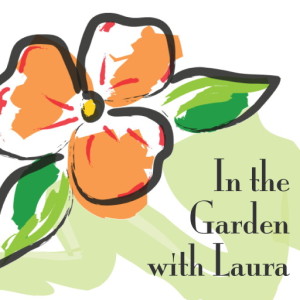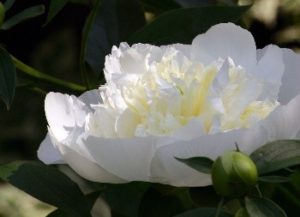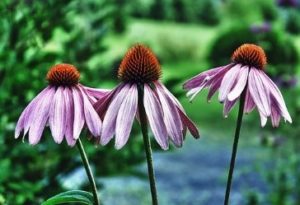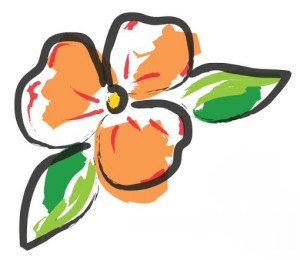 What’s the secret to a green thumb? Plant your flowers in the right place at the right time!
What’s the secret to a green thumb? Plant your flowers in the right place at the right time!
The right soil and the proper amount of light and water allow plants to thrive. Impatience will give you a summer full of flowers if they are planted in moist soil and partial shade.
Perennials should be placed with even greater care since they are more permanent members of your landscape. Lupines and delphiniums can live three or four years. Japanese irises can live for decades and Peonies (Paeonia) a life time.
care since they are more permanent members of your landscape. Lupines and delphiniums can live three or four years. Japanese irises can live for decades and Peonies (Paeonia) a life time.
What’s in Your Soil?
If possible, test your soil. Is it compatible with what you plan to grow? A soil test will provide you with in-depth information such as pH levels . Most flowers like a pH between 6.0 and 7.00, which is slightly acidic to neutral. Azaleas, rhododendrons and blueberries prefer more acidic soil. Ferns like more alkaline soil (above 7 pH).
. Most flowers like a pH between 6.0 and 7.00, which is slightly acidic to neutral. Azaleas, rhododendrons and blueberries prefer more acidic soil. Ferns like more alkaline soil (above 7 pH).
Whether you plant one flower or a flower bed, make sure that the soil is workable. The soil should have good texture, aeration and drainage. Ideally add three- to four-inches of organic materials such as peat; compost; leaves and grass clippings; or well-rotted manure in the spring or fall, or both, prior to adding plants to your garden. Work it into the top six- to eight-inches of soil.
If you don’t have time to amend the soil six months prior to planting season, then do it when you plant your garden. Make sure the soil is workable. Take it into your hand, squeeze it into a ball and if it crumbles easily it is ready to work. If it remains a tight ball, it is too wet to work. If it won’t make a ball, you need to add more organic material
For information about soils, go to http://extension.umd.edu/hgic/soil-basics or Episode 2 of In the Garden with Laura, The Dirt on Soil: https://www.youtube.com/watch?v=lZgBRLOc3Vk.
Moisture
When selecting a location, consider how much mo isture the site gets. Except for periods of extreme heat, you should not have to water an established garden of native flowers. Plants such as the Purple coneflower (Echinacea purpurea) are drought tolerant. Plants that require a moist site should be planted where they naturally get more water. Consider placing them by a fountain, stream or pond. One such plant is the white Turtlehead (Chelone glabra), the host plant for Maryland’s endangered state butterfly.
isture the site gets. Except for periods of extreme heat, you should not have to water an established garden of native flowers. Plants such as the Purple coneflower (Echinacea purpurea) are drought tolerant. Plants that require a moist site should be planted where they naturally get more water. Consider placing them by a fountain, stream or pond. One such plant is the white Turtlehead (Chelone glabra), the host plant for Maryland’s endangered state butterfly.
Loose roots
Flowers and shrubs should have their roots loosened before being placed in a new hole so they can easily spread out and absorb water and nutrients. If the plant is root bound, take a trowel or hand rake and score the roots down the side of the root ball. Spread the roots out in the hole.
Know when to sow
In late summer or early fall, plant spring-flowering perennials so they have time to become established. In spring, plant perennials that bloom in the late summer or early fall. Native asters and Joe-Pye weed (Eupatorium fistulosum) are examples of perennials that should be planted in the spring.
University of Maryland Extension Tips:
Transplanting Perennials
If you need to transplant a perennial plant, do it on a cloudy day to reduce sun and/or heat stress. If you are careful, perennials can be transplanted even when they are in bloom; but it’s best to do it when they are dormant or just starting growth. Early spring or fall are the best times to transplant them.
Best Planting Practices from the University of Maryland Extension:
- Dig the new hole first, amending the soil with organic matter if possible.
- Fill it with water and let it drain.
- Dig the perennial up carefully, saving as large a root ball as possible.
- Settle the transplant into the hole, filling in with soil.
- Water the new transplant, mulch it, and protect it, if necessary,
with a cardboard screen.
For more information about perennials, go to https://extension.umd.edu/hgic/flowers/perennials
Photos courtesy of Pixabay: Top to bottom: A Peony (Paeonia) flower, a fern leaf and Purple cone flowers (Echinacea purpurea). 
– Laura
